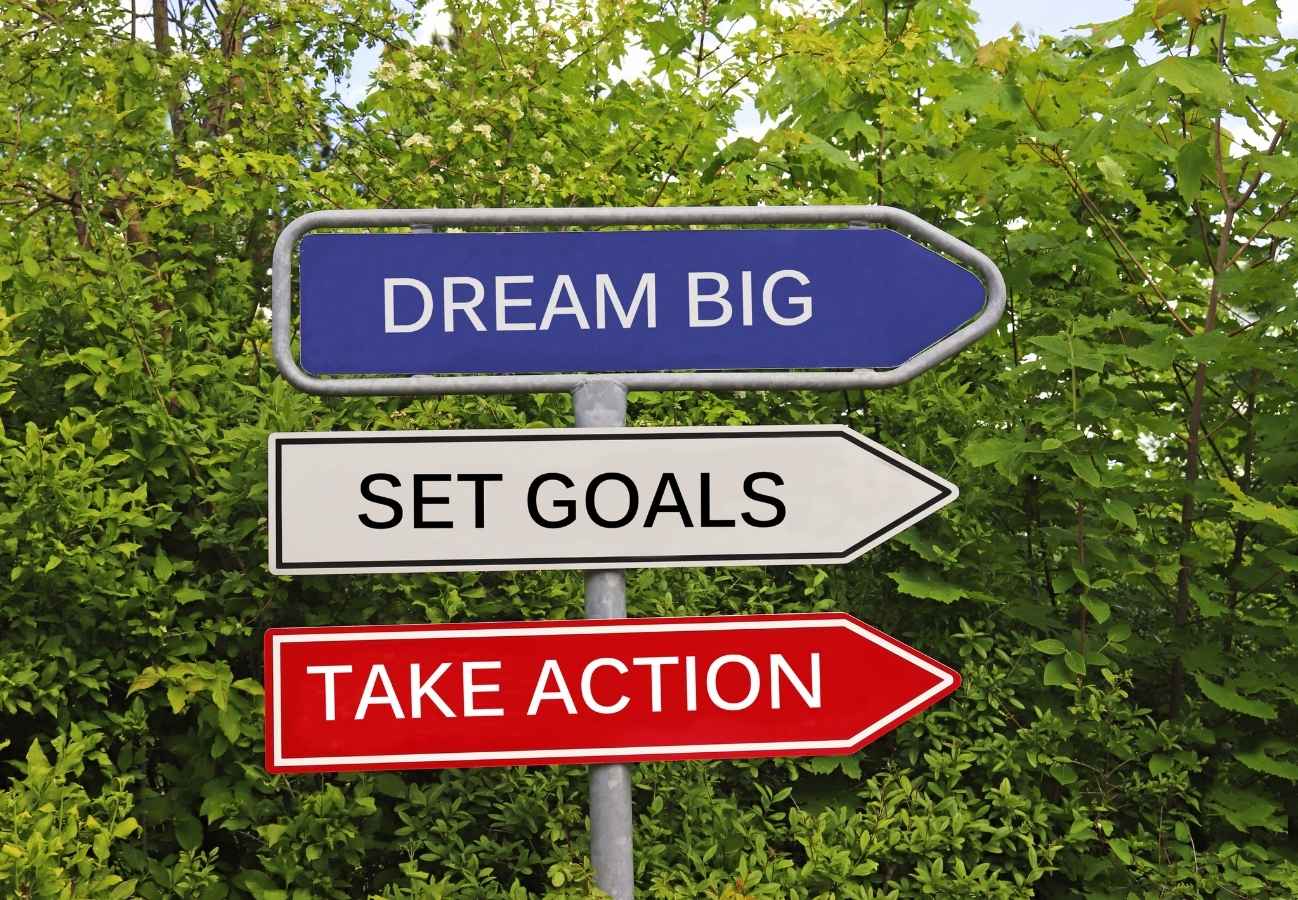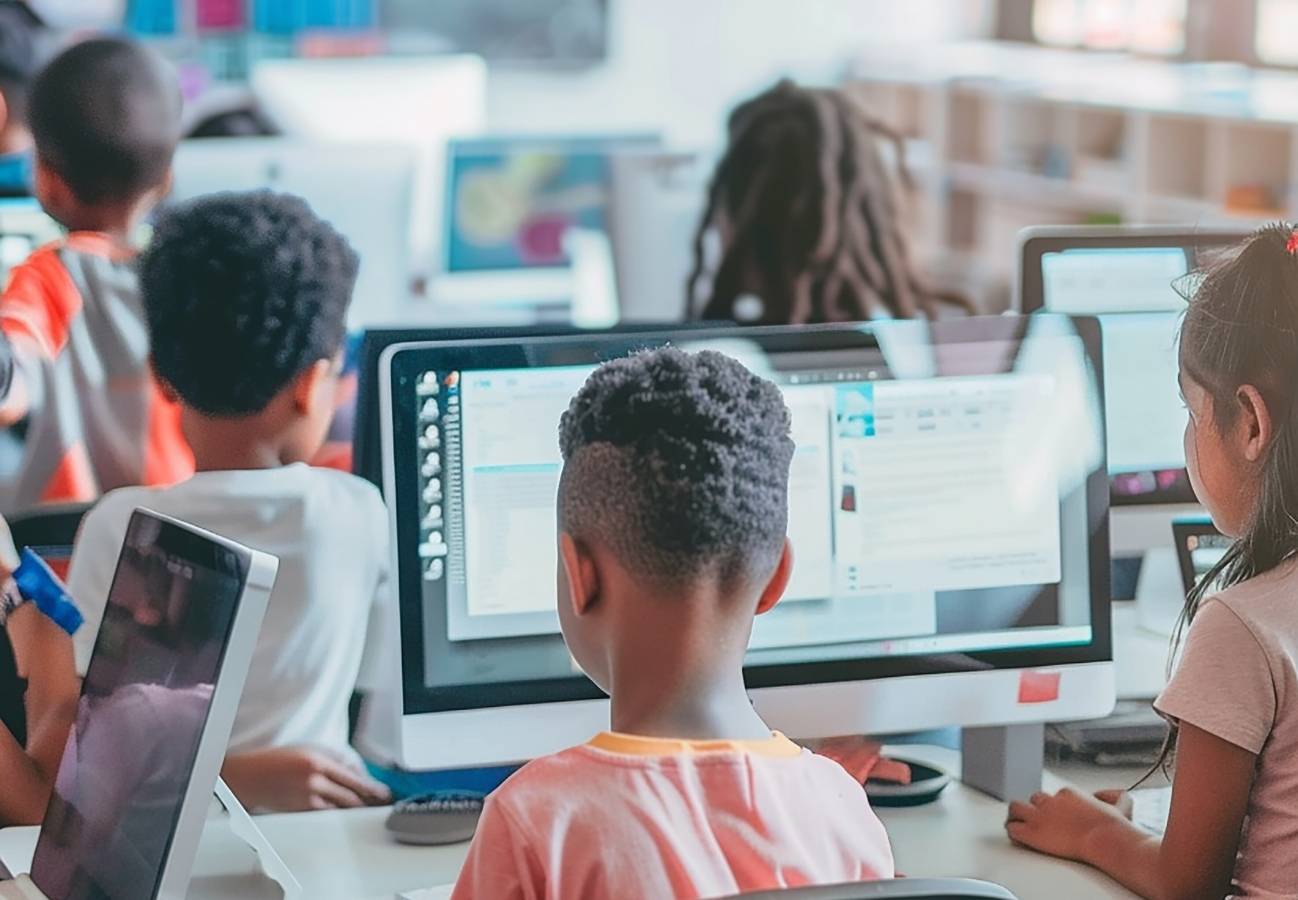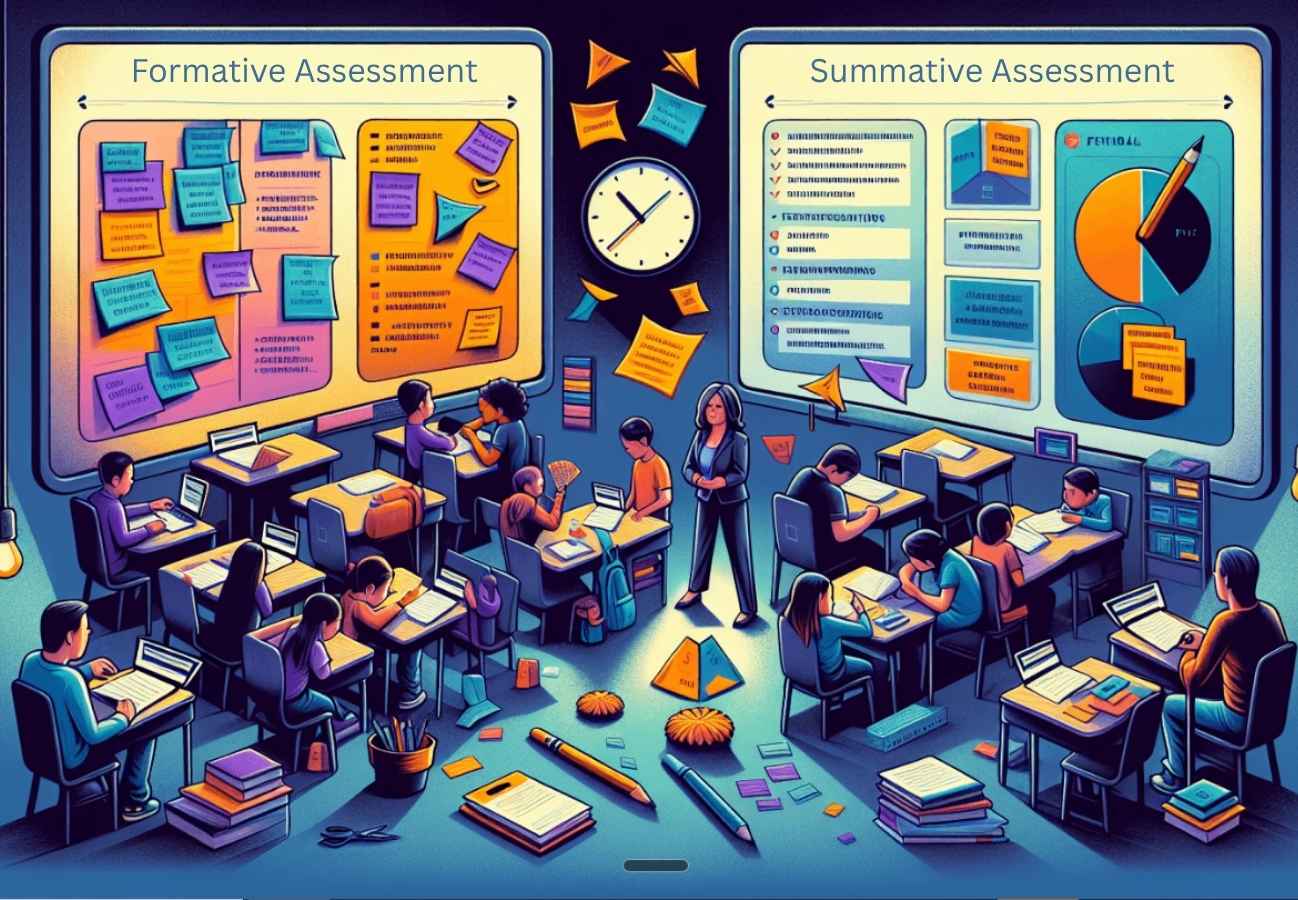Walk into most classrooms and you'll see the same pattern. Teacher talks, students listen. Teacher decides what matters, students comply. Teacher assesses, students perform.
This teacher-centered model assumes learning flows in one direction - from expert to novice. Student-centered learning challenges this assumption entirely.
What Is Student-Centered Learning?
Student-centered learning shifts focus from teacher-directed instruction to learner-driven exploration. Students become active participants who take ownership of their learning journey. Teachers become facilitators and guides rather than sole knowledge providers.
The approach positions learners as constructors of knowledge, not passive recipients. Students make meaningful choices about what they learn, how they learn it, and how they demonstrate understanding.
This isn't about teachers doing less work. It's about different work - designing learning experiences instead of delivering content, asking questions instead of providing answers, observing progress instead of just testing outcomes.
Research consistently shows that student-centered approaches improve academic outcomes, increase engagement, and develop critical thinking skills. But the real shift is philosophical. It requires believing that students can direct their own learning when given proper support and structure.
Core Principles That Define Student-Centered Teaching
Effective student-centered instruction rests on several foundational principles that transform classroom dynamics.
Active Learning Over Passive Reception
Students engage directly with content through problem-solving, discussion, and hands-on activities. They don't sit quietly while teachers lecture. They participate in meaningful tasks that require thinking and application.
This active engagement helps students retain information longer and develop deeper understanding. When you do something with knowledge rather than just hear about it, learning sticks.
The industrial model of education treated students as empty vessels to fill. Student-centered learning recognizes that minds don't work that way. Understanding develops through active construction, not passive absorption.
Choice and Voice in Learning
Student-centered environments provide multiple pathways for exploring topics. Learners might choose between different project formats, select reading materials that match their interests, or pursue independent research on related topics.
When students have genuine input into their educational experience, motivation increases dramatically. They're no longer just completing assignments. They're pursuing questions that matter to them.
Choice doesn't mean chaos. Teachers design the framework and learning objectives. Students decide how to get there. This balance between structure and freedom defines effective student-centered practice.
Collaborative Knowledge Construction
Learning becomes social. Students work together to solve problems and share insights. Small group discussions, peer teaching, and collaborative projects help learners see multiple perspectives and build communication skills.
This reflects how learning actually works outside school. Adults rarely learn in isolation. They consult colleagues, discuss ideas, and build understanding through conversation. Why should school be different?
Teachers design activities that encourage students to learn from each other, not just from textbooks or lectures. The classroom becomes a community of learners rather than a collection of isolated individuals.
Students as Decision-Makers
Perhaps the most radical principle: students make real decisions about their learning. Not just surface choices like "blue folder or red folder" but substantive decisions about direction, pace, and demonstration of mastery.
This requires trust. Many educators struggle with relinquishing control, fearing students will make poor choices or avoid challenging work. But research and experience show that students generally rise to meet high expectations when given autonomy alongside support.
Decision-making is a skill that develops through practice. Students who never make choices about their learning never develop judgment about what works for them.
Student-Centered vs Teacher-Centered: The Critical Differences
Understanding these differences helps educators make informed decisions about classroom practices.
Role of the Teacher
Teacher-centered: Educators act as primary information sources who deliver content through lectures and direct instruction. They're the experts who know what students need.
Student-centered: Teachers become facilitators who guide discovery and provide support when needed. They're still experts, but they use that expertise differently - designing experiences, asking questions, observing progress.
This shift is harder than it sounds. Many teachers were trained in teacher-centered methods and experienced school as passive learners themselves. Facilitating requires different skills than presenting.
Role of the Student
Teacher-centered: Students are receivers who absorb information, complete assigned tasks, and demonstrate learning through tests and homework. Success means following directions well.
Student-centered: Students are investigators who ask questions, pursue interests, and construct understanding through active engagement. Success means developing independence and thinking skills.
This shift challenges students too, especially those who've learned to game the traditional system. Some resist taking responsibility for their own learning.
Assessment and Evaluation
Teacher-centered: Assessment relies heavily on standardized tests and uniform assignments that measure recall. Everyone takes the same test at the same time. Grades rank and sort students.
Student-centered: Assessment uses diverse methods including portfolios, peer evaluation, self-reflection, and project-based demonstrations. Students might show understanding in different ways at different times. Feedback focuses on growth. Learn more about assessment approaches: Formative vs Summative Assessment
Traditional assessment assumes learning is uniform and measurable through standardized instruments. Student-centered assessment acknowledges that understanding develops differently for different learners.
Classroom Environment and Structure
Teacher-centered: Rows of desks face forward toward the instructor. The physical space signals who holds knowledge and authority.
Student-centered: Flexible seating arrangements, collaboration areas, and resources students can access independently. The space supports movement, interaction, and different learning preferences.
Environment shapes behavior. Rigid seating arrangements make collaboration difficult. Flexible spaces invite it.
Pace and Timing
Teacher-centered: Everyone moves through content on the same schedule. The class proceeds whether individuals understand or not. Falling behind means struggling to catch up.
Student-centered: Students progress based on understanding rather than calendar. Some move quickly through certain topics, others need more time. The system adapts to learners rather than forcing learners to adapt to the system.
This principle threatens deeply entrenched structures - age-based grades, bell schedules, standardized pacing guides. True student-centered learning ultimately requires rethinking these systemic elements.
Why Student-Centered Learning Matters
Research demonstrates significant advantages when schools implement student-centered methods. But the benefits go deeper than test scores.
Improved Academic Achievement
Students in learner-centered classrooms show higher test scores, better retention, and stronger performance on complex thinking tasks. Active engagement helps learners develop deeper understanding of subject matter.
Meta-analyses of educational research consistently find positive effects for student-centered approaches across grade levels and subject areas. The evidence is clear.
But academic achievement shouldn't be the only measure that matters. What about curiosity, creativity, and intrinsic motivation?
Enhanced Critical Thinking Skills
Student-centered learning naturally develops analytical and problem-solving abilities. When learners must evaluate information, make decisions, and justify reasoning, they strengthen cognitive skills that transfer to new situations.
These thinking skills prepare students for uncertain futures where specific content knowledge becomes obsolete quickly. The ability to learn, adapt, and think critically matters more than memorizing facts.
Traditional education often treats thinking skills as luxuries to pursue after covering basic content. Student-centered approaches recognize that you can't separate thinking from learning. Explore cognitive processes: Cognitive Learning Theory
Increased Motivation and Engagement
Students who have voice and choice show higher levels of intrinsic motivation. They attend class more regularly, participate more actively, and persist through challenging tasks.
This engagement creates positive classroom climates that benefit all learners. When students care about their work, behavior problems decrease and community strengthens.
External motivation - grades, compliance, pleasing adults - works only as long as those external forces persist. Intrinsic motivation sustains learning throughout life.
Development of Self-Regulation
Student-centered learning requires students to manage their own time, set goals, and monitor progress. These executive function skills don't develop automatically. They require practice and support. Learn about independent learning: Self-Learning
Many students reach college without basic self-regulation skills because high school controlled every aspect of their learning. Student-centered approaches build these capacities earlier.
Preparation for Real-World Demands
The world outside school rarely looks like traditional classrooms. Work involves collaboration, problem-solving, self-direction, and continuous learning. Student-centered education better prepares students for these realities.
Employers consistently report wanting workers who can think critically, work in teams, and adapt to change. These capabilities develop through student-centered learning experiences.
Practical Student-Centered Teaching Strategies
Educators can implement student-centered instruction through specific classroom practices. Below are some examples.
Also review our full guide hub for Teaching Strategies
Project-Based Learning
Students work on extended investigations that connect to real-world problems. These projects allow learners to pursue questions that interest them while developing research, communication, and collaboration skills.
Effective projects include clear learning objectives, regular check-ins, and opportunities for reflection and revision. The project becomes the vehicle for learning content and skills, not just a culminating activity after learning ends.
Project-based learning can address multiple standards simultaneously, making it more efficient than traditional coverage models despite taking more time per topic.
Socratic Questioning
Teachers use open-ended questions to guide student thinking rather than providing direct answers. This questioning approach encourages learners to examine assumptions, consider evidence, and develop their own conclusions.
Good questions include: "What makes you think that?" "How would you test that idea?" "What's another way to look at this?" "Where might this reasoning break down?"
Skilled questioning helps students become independent thinkers who can analyze information critically. But it requires patience. Waiting for student thinking takes longer than just telling them the answer.
Learning Centers and Stations
Classroom spaces include different areas where students work on various activities related to learning objectives. Centers might focus on hands-on experiments, independent reading, collaborative problem-solving, or creative expression.
This approach allows students to move at their own pace and choose activities that match their learning preferences. It also enables teachers to work with small groups or individuals while others work independently.
Centers require significant setup time and clear procedures. But once established, they create productive learning environments with high engagement.
Peer Teaching and Collaboration
Students explain concepts to classmates, provide feedback on each other's work, and collaborate on group projects. These interactions help learners see different perspectives and develop communication skills. Explore collaborative approaches: Cooperative Learning
Peer teaching reinforces understanding for the student doing the explaining. Research shows that teaching others is one of the most effective learning strategies.
But effective collaboration requires explicit instruction. Students need to learn how to give useful feedback, listen actively, and work productively in groups.
Student-Led Conferences
Instead of teachers reporting to parents about student progress, students present their own learning journey using portfolios, reflections, and work samples.
This practice builds student ownership and metacognitive awareness. It also provides more authentic information than traditional report cards.
Student-led conferences require preparation time but transform how students think about their learning and progress.
Choice Boards and Menus
Teachers design arrays of learning activities addressing the same objectives through different formats. Students choose which activities to complete, providing autonomy within structure.
A choice board might offer options like: create a video explanation, write a research paper, design an infographic, conduct an experiment, or teach the concept to classmates.
This strategy acknowledges that students learn and demonstrate understanding in different ways. It also increases motivation by providing genuine choice.
Implementing Student-Centered Learning Across Grade Levels
Student-centered learning looks different across elementary, middle, and high school settings.
Elementary School Applications
Young learners benefit from choice boards, learning centers, and hands-on exploration. Teachers might offer different ways to practice math facts, provide various books at appropriate reading levels, or allow students to choose how they share learning.
Even simple choices - selecting a workspace, choosing a partner, deciding the order of activities - increase student ownership. Young children can handle more autonomy than traditional schooling typically provides.
Elementary teachers often find student-centered approaches natural because young children's curiosity and energy resist passive learning anyway.
Middle School Considerations
Adolescent learners respond well to project-based learning, student-led discussions, and opportunities to explore topics connecting to their interests and experiences.
Middle school students particularly value having their voices heard and ideas respected. This age group can handle complex collaborative projects and benefits from regular goal-setting and reflection activities.
The transition to adolescence creates new developmental needs that student-centered learning addresses well - identity exploration, peer relationships, and growing independence.
High School Implementation
Older students can engage in independent research projects, internships, and community-based learning experiences. High school student-centered instruction might include student-designed courses, peer tutoring programs, and opportunities to teach younger learners.
These experiences prepare students for the independence required in college and careers. Yet many high schools remain the most teacher-centered environments, focused on content coverage and test preparation.
The tension between student-centered principles and college admission pressures creates real challenges for high school educators trying to shift practice.
Challenges and Real Obstacles Facing Student Centered Learning
Transitioning to student-centered teaching presents obstacles that educators must navigate honestly.
Time and Curriculum Constraints
Many teachers worry that student-centered approaches take too much time when they must cover required curriculum standards. The pressure to "get through" content pushes toward lecture and worksheets.
But research shows that deeper learning through student-centered methods often leads to better retention and understanding. Covering less more deeply often produces better outcomes than superficial coverage of everything.
The real problem isn't student-centered learning - it's curriculum that's impossibly broad and assessments that reward breadth over depth.
Classroom Management Concerns
Some educators fear that giving students more control will lead to chaos or off-task behavior. This fear isn't irrational - poorly implemented student-centered learning does create management problems.
Successful student-centered classrooms require clear expectations, consistent routines, and gradual release of responsibility. Students need explicit instruction in collaboration skills and self-regulation strategies.
The transition period can be challenging. Students accustomed to compliance may struggle with autonomy initially. But the long-term benefits outweigh short-term difficulties.
Assessment and Grading Challenges
Traditional grading systems struggle to capture the full range of learning in student-centered classrooms. How do you grade collaboration skills, growth mindset, or ability to ask good questions?
Teachers can develop rubrics assessing process as well as product, use portfolio systems, and include student self-assessment. But these alternative assessment methods require more time and don't produce the simple letter grades that traditional reporting demands. Explore assessment tools: Formative Assessment Tools
Meaningful assessment of student-centered learning often conflicts with institutional grading requirements.
Equity and Access Issues
Student-centered learning can inadvertently advantage students who arrive with strong self-regulation skills, supportive home environments, and cultural capital that aligns with school expectations.
Students who struggle with organization, lack stable home support, or come from cultures with different learning traditions may find student-centered environments challenging without additional scaffolding. Learn about support structures: Scaffolding in Teaching
Effective student-centered practice requires explicit instruction in skills that privileged students often develop implicitly. Otherwise, it risks reproducing inequities under the guise of student choice.
Resistance from Multiple Directions
Students accustomed to teacher-centered schooling may resist taking responsibility for their learning. Parents worry their children aren't being "taught properly." Administrators fear test scores will drop. Colleagues question whether you're being rigorous.
This resistance is real and exhausting. Shifting to student-centered practice often feels lonely, especially in schools where traditional approaches dominate.
Change requires not just new techniques but new mindsets - for teachers, students, parents, and systems.
Where Student-Centered Learning Should Lead
The deeper implications of student-centered learning extend beyond classroom techniques.
Toward Competency-Based Progression
True student-centered learning ultimately requires abandoning time-based progression. Students shouldn't advance because the calendar says so. They should advance when they demonstrate readiness.
Competency-based systems align naturally with student-centered principles. But they challenge fundamental structures - age-based grades, bell schedules, credit hours, transcripts organized by courses rather than competencies.
Rethinking Teacher Preparation
Most teacher education programs train teachers for teacher-centered classrooms. Future educators need extensive practice facilitating learning, designing student-centered experiences, and assessing complex outcomes.
This requires rethinking not just what teacher candidates learn but how they learn it. Teacher education should model the approaches we want teachers to use.
For Educator Autonomy and Professional Judgment
Student-centered learning requires teachers to make complex decisions based on student needs rather than following scripts or pacing guides. This demands professional autonomy and trust.
The industrial model treats teachers as interchangeable technicians implementing others' decisions. Student-centered education requires recognizing teachers as professionals who exercise judgment.
Without systemic changes supporting teacher autonomy, student-centered learning remains superficial - techniques grafted onto fundamentally controlling structures. Explore professional growth: Teacher Growth
Questioning Education's Purpose
Perhaps the deepest question: What is school for?
If the purpose is sorting students, standardizing outcomes, and preparing compliant workers, then teacher-centered education makes sense. Control, efficiency, and uniformity align with those goals.
If the purpose is developing capable, curious, self-directed learners who can think critically and adapt to change, then student-centered approaches align better.
These aren't just different techniques. They're fundamentally different visions of what education should accomplish and what kind of society we're building.
What Student-Centered Learning Actually Requires
Student-centered learning isn't just a set of strategies you can add to existing practice. It's a fundamental shift in how we think about teaching, learning, and the relationship between them.
It requires believing students are capable of directing their own learning. Trusting them to make good decisions when given proper support. Creating structures that enable autonomy rather than control it.
Most importantly, it requires patience. Students need time to develop self-direction. Teachers need time to learn facilitation skills. Schools need time to shift culture and structures.
The question isn't whether research supports student-centered learning - it does. The question is whether schools will commit to the deep, sustained changes necessary to implement it authentically rather than superficially.









